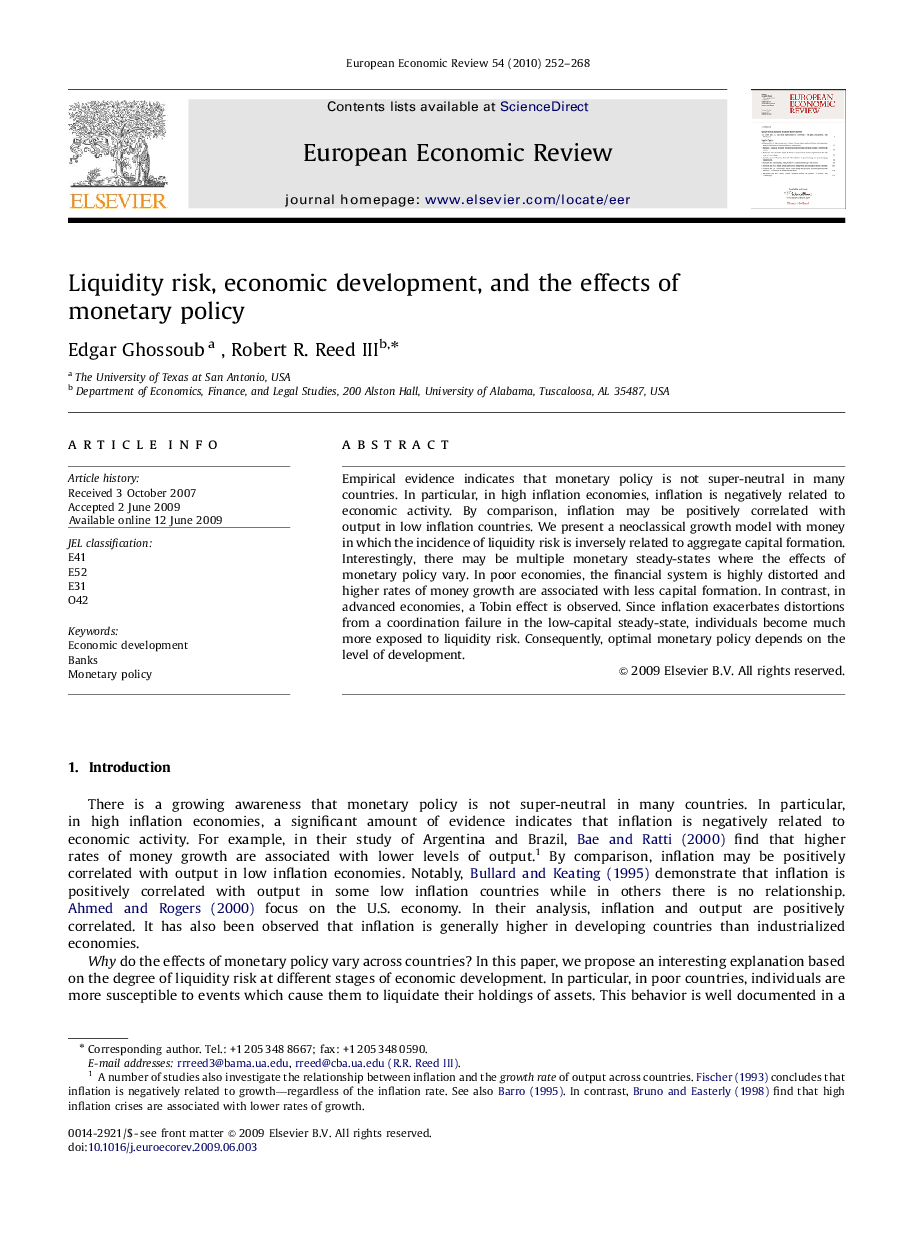| Article ID | Journal | Published Year | Pages | File Type |
|---|---|---|---|---|
| 5067447 | European Economic Review | 2010 | 17 Pages |
Abstract
Empirical evidence indicates that monetary policy is not super-neutral in many countries. In particular, in high inflation economies, inflation is negatively related to economic activity. By comparison, inflation may be positively correlated with output in low inflation countries. We present a neoclassical growth model with money in which the incidence of liquidity risk is inversely related to aggregate capital formation. Interestingly, there may be multiple monetary steady-states where the effects of monetary policy vary. In poor economies, the financial system is highly distorted and higher rates of money growth are associated with less capital formation. In contrast, in advanced economies, a Tobin effect is observed. Since inflation exacerbates distortions from a coordination failure in the low-capital steady-state, individuals become much more exposed to liquidity risk. Consequently, optimal monetary policy depends on the level of development.
Related Topics
Social Sciences and Humanities
Economics, Econometrics and Finance
Economics and Econometrics
Authors
Edgar Ghossoub, Robert R. III,
